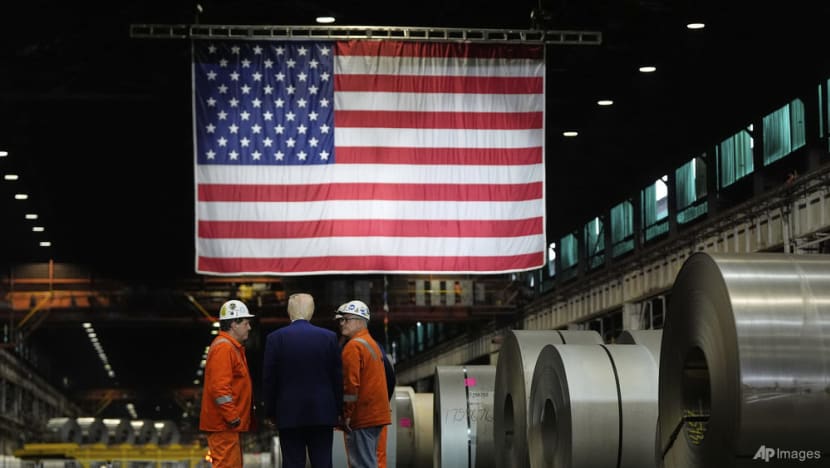US job growth slows sharply in July; unemployment rate rises to 4.2%

President Donald Trump talks to workers as he tours US Steel Corporation's Mon Valley Works-Irvin plant on May 30, 2025, in West Mifflin, PA. (File photo: AP/Julia Demaree Nikhinson)
WASHINGTON: United States job growth slowed more than expected in July while the prior month's data was revised sharply lower, pointing to a sharp moderation in the labour market.
Nonfarm payrolls increased by 73,000 jobs last month after rising by a downwardly revised 14,000 in June, the Labor Department's Bureau of Labor Statistics said in its closely watched employment report on Friday (Aug 1).
Economists polled by Reuters had forecast payrolls increasing by 110,000 jobs after rising by a previously reported 147,000 in June. The unemployment rate rose to 4.2 per cent from 4.1 per cent in June.
Estimates ranged from no jobs added to an increase of 176,000 positions. The Federal Reserve on Wednesday left its benchmark interest rate in the 4.25 per cent to 4.50 per cent range.
Fed Chair Jerome Powell's comments after the decision undercut confidence that the central bank would resume policy easing in September as had been widely anticipated by financial markets and some economists.
Though Powell described the labour market as being in balance because of supply and demand both declining simultaneously, he acknowledged this dynamic was "suggestive of downside risk".
Job growth has slowed amid uncertainty over where President Donald Trump's tariff levels will eventually settle.
Trump on Thursday slapped dozens of trading partners with steep tariffs ahead of a Friday trade deal deadline, including a 35 per cent duty on many goods from Canada.
The White House's immigration crackdown has reduced labour supply, as has an acceleration of baby boomer retirements.
The reduction in immigration flows means the economy now needs to create roughly 100,000 jobs per month or less to keep up with growth in the working-age population, economists estimated.
The decline in the unemployment rate to 4.1 per cent in June was in part due to people dropping out of the labour force. July's increase still left the jobless rate in the narrow 4 per cent to 4.2 range that has prevailed since May 2024.
Financial markets have pushed back an anticipated September rate cut to October. But with tariffs starting to raise inflation, some economists think the window for the Fed resuming policy easing this year is closing.
Others, however, believe the central bank could still cut rates in September, especially if the BLS' preliminary payrolls benchmark revision next month projects a sharp drop in the employment level from April 2024 through March this year.
The Quarterly Census of Employment and Wages data, derived from reports by employers to the state unemployment insurance programs, has indicated a much slower pace of job growth between April 2024 and December 2024 than payrolls have suggested.













